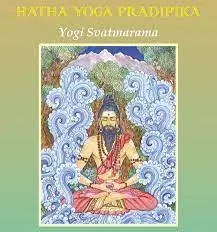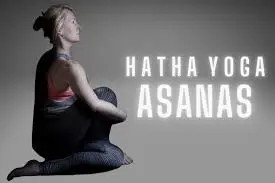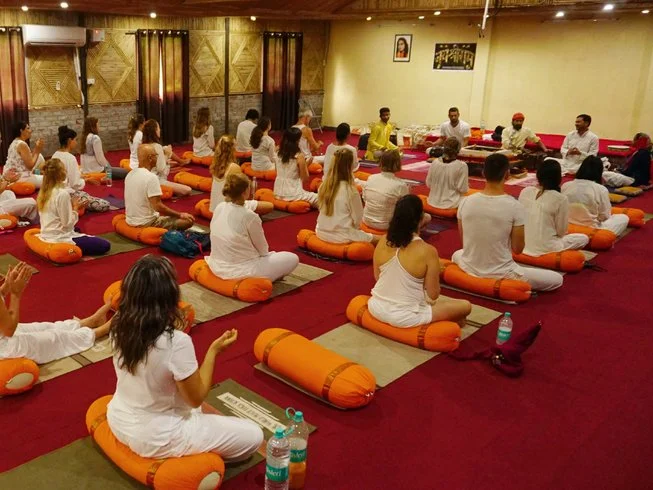Hatha Yoga, an ancient practice rooted in the rich traditions of India, has gained global recognition for its holistic approach to health and well-being. The term “Hatha” is derived from Sanskrit words meaning “force” or “effort” emphasizing the discipline and dedication required to achieve balance in mind, body, and spirit. This timeless practice encompasses a diverse range of physical postures (asanas), breathing techniques (pranayama), meditation, and philosophical principles to harmonize the individual with the universal consciousness.
Hatha Yoga is not just about physical exercise; it is a comprehensive system designed to cultivate self-awareness, inner peace, and spiritual growth. By integrating mindful movement with conscious breathing and mental focus, practitioners can unlock the profound potential of the human body and mind. Through regular practice, individuals can experience a myriad of benefits, including improved flexibility, strength, mental clarity, emotional balance, and a deeper connection to their inner selves.
In this blog, we will explore the origins, principles, techniques, benefits, and practical applications of Hatha Yoga.
Contents
What is Hatha Yoga?
Hatha Yoga is a traditional system of yoga that focuses on physical postures (asanas), breathing techniques (pranayama), and meditation to promote overall health and well-being. The term “Hatha” is derived from two Sanskrit words: “ha,” meaning sun, and “tha,” meaning moon. Together, they represent the balance of opposites and the harmonization of body and mind.
Hatha Yoga aims to create a state of harmony and balance within the practitioner, integrating physical health with mental clarity and spiritual growth. It provides a comprehensive approach to self-care, offering tools to manage stress, increase energy levels, and foster a deep sense of inner peace.
The Origins of Hatha Yoga

Hatha Yoga started a long time ago, and we can learn about it from old books like the Hatha Yoga Pradipika. This book is important because it gives us a lot of information about how to practice Hatha Yoga. It was written around the 15th century by a wise person named Swami Swatmarama. He wrote this book to help people understand and learn Hatha Yoga better.
The Hatha Yoga Pradipika is like a manual or guidebook for practicing Hatha Yoga. It talks about different poses, breathing exercises, and other techniques used in Hatha Yoga. These practices are meant to help make the body stronger and more flexible. They also prepare the mind and body for deeper spiritual practices. So, this book is really important because it helps us learn and understand how to do Hatha Yoga properly.
Principles of Hatha Yoga:
- Balance: Hatha Yoga emphasizes achieving balance in all aspects of life, including physical, mental, and emotional well-being. Through the practice of asanas (postures) and pranayama (breathing techniques), practitioners seek to create harmony within themselves.
- Unity: Hatha Yoga views the individual as a holistic entity comprised of interconnected layers – physical body, energy body, mind, and spirit. The practice aims to unify these aspects of the self to attain a state of wholeness and integration.
- Mindfulness: Central to Hatha Yoga is the cultivation of mindfulness or present-moment awareness. Practitioners learn to observe their thoughts, emotions, and sensations without judgment, fostering a deeper understanding of themselves and their experiences.
- Self-Exploration: Hatha Yoga encourages self-exploration and self-inquiry as a means of personal growth and transformation. Through introspection and reflection, practitioners develop greater self-awareness and insight into their true nature.
- Non-Violence (Ahimsa): Ahimsa, or non-violence, is a foundational principle of Hatha Yoga. Practitioners strive to cultivate compassion, kindness, and respect for all living beings, including themselves.
- Discipline: Hatha Yoga emphasizes the importance of discipline and dedication in the practice. Practitioners commit to regular practice, self-discipline, and perseverance to progress on their spiritual journey.
- Acceptance: Hatha Yoga teaches acceptance of oneself and others as they are, without the need for judgment or comparison. Practitioners learn to embrace their strengths and weaknesses with equanimity, fostering a sense of inner peace and contentment.
- Detachment: Detachment is another key principle of Hatha Yoga, emphasizing the importance of letting go of attachment to outcomes and desires. Practitioners learn to cultivate a sense of detachment from material possessions and ego-driven desires, fostering inner freedom and liberation.
- Surrender: Hatha Yoga encourages surrendering to the present moment and surrendering to the divine will. Practitioners learn to trust in the natural flow of life and surrender to the higher intelligence that guides their path.
- Union: At its core, Hatha Yoga is about union – the union of body and mind, individual consciousness with universal consciousness, and union with the divine. Through Hatha Yoga, practitioners seek to experience this profound sense of unity and interconnectedness with all of creation.
Techniques of Hatha Yoga:

Asanas (Postures):
Yoga Asanas are a fundamental aspect of Hatha Yoga. They involve various physical movements and positions that aim to improve flexibility, strength, and balance. By practicing asanas regularly, individuals can enhance their overall physical health and well-being. Each asana targets specific muscle groups and body systems, promoting circulation, improving posture, and relieving tension. Additionally, asanas help cultivate mindfulness and body awareness, fostering a deeper connection between the body, mind, and breath.
Pranayama (Breath Control):
Pranayama techniques in Hatha Yoga focus on controlling the breath to regulate the flow of life force energy (prana) within the body. Through specific breathing exercises, practitioners learn to deepen and lengthen their breath, enhancing vitality and mental clarity. Pranayama practices also help calm the mind, reduce stress, and promote relaxation. By mastering breath control, individuals can access a powerful tool for managing emotions, improving concentration, and harmonizing the body’s energy systems.
Mudras (Gestures):
Mudras are symbolic hand gestures used in Hatha Yoga to channel and redirect the body’s energy flow. Each mudra is believed to stimulate different areas of the brain and influence subtle energy pathways within the body. By forming specific hand positions, practitioners can create a connection between the physical body and the mind, fostering a sense of inner balance and harmony. Mudras are often integrated into meditation, pranayama, and asana practices to enhance their therapeutic benefits and deepen the practitioner’s spiritual experience.
Bandhas (Energy Locks):
Bandhas involve the conscious contraction of specific muscles or energy centers within the body to redirect and control the flow of prana or life force energy. These energy locks are believed to seal and contain the vital energy generated during yoga practice, preventing its dissipation and promoting its upward movement along the spinal column. By mastering bandhas, practitioners can enhance the effectiveness of their yoga practice, deepen their concentration, and awaken dormant energy within the body. The three main bandhas in Hatha Yoga are Mula Bandha (root lock), Uddiyana Bandha (abdominal lock), and Jalandhara Bandha (throat lock).
Benefits of Hatha Yoga:
- Improved Flexibility: Regular practice of Hatha Yoga helps increase flexibility by stretching and lengthening the muscles, ligaments, and tendons. This can lead to an improved range of motion and reduced stiffness in the body.
- Increased Strength: Hatha Yoga poses require holding and supporting your body weight, which helps build strength in various muscle groups, including the core, arms, legs, and back.
- Better Posture: Hatha Yoga emphasizes alignment and proper body mechanics, which can help improve posture and reduce the risk of musculoskeletal imbalances and injuries.
- Enhanced Balance and Coordination: Hatha Yoga poses challenges to balance and coordination, improving proprioception (awareness of body position) and stability, both physically and mentally.
- Stress Reduction: Hatha Yoga incorporates relaxation techniques such as deep breathing, meditation, and mindfulness, which can help reduce stress levels and promote a sense of calm and inner peace.
- Improved Breathing: Pranayama, or yogic breathing exercises, practiced in Hatha Yoga help expand lung capacity, increase oxygen intake, and improve respiratory function, leading to better overall health and vitality.
- Enhanced Mental Clarity and Focus: Hatha Yoga practices promote mindfulness and present-moment awareness, which can improve mental clarity, concentration, and cognitive function.
- Better Sleep: Hatha Yoga can help alleviate insomnia and improve sleep quality by reducing stress, calming the nervous system, and promoting relaxation.
- Stress Reduction: Hatha Yoga incorporates relaxation techniques such as deep breathing, meditation, and mindfulness, which can help reduce stress levels and promote a sense of calm and inner peace.
- Emotional Balance: Hatha Yoga practices encourage self-reflection, self-awareness, and emotional regulation, leading to greater emotional resilience and well-being.
Best Schools of Hatha Yoga in India

- Isha Yoga Center Coimbatore, Tamil Nadu: Founded by Sadhguru Jaggi Vasudev, the Isha Yoga Center offers comprehensive Hatha Yoga programs, including the flagship Inner Engineering program. The center hosts residential Hatha Yoga retreats, workshops, and teacher training courses in a serene and spiritually charged environment.
- Kaivalyadhama Yoga Institute, Lonavala, Maharashtra: Established in 1924, Kaivalyadhama Yoga Institute is one of the oldest yoga institutions in India. It offers residential Hatha Yoga courses, retreats, and teacher training programs based on traditional yogic principles, scientific research, and modern methodologies.
- Bihar School of Yoga, Munger, Bihar: Founded by Swami Satyananda Saraswati, the Bihar School of Yoga is renowned for its comprehensive Hatha Yoga teachings. The school offers residential courses, workshops, and retreats focusing on classical Hatha Yoga practices, including asanas, pranayama, meditation, and yogic philosophy.
- Krishnamacharya Yoga Mandiram, Chennai, Tamil Nadu: Founded by the legendary yoga teacher T. Krishnamacharya, the Krishnamacharya Yoga Mandiram (KYM) is a leading yoga institute offering Hatha Yoga classes, workshops, and teacher training programs. KYM follows the teachings of Krishnamacharya and his son, T.K.V. Desikachar, emphasizing personalized yoga practices tailored to individual needs.
- Swami Rama Sadhaka Grama, Rishikesh, Uttarakhand: Swami Rama Sadhaka Grama is an ashram founded by Swami Veda Bharati, a disciple of Swami Rama of the Himalayas. The ashram offers residential Hatha Yoga retreats, meditation programs, and yoga teacher training courses inspired by the Himalayan tradition of yoga and meditation.
- Parmarth Niketan Ashram, Rishikesh, Uttarakhand: Situated on the banks of the Ganges River Parmarth Niketan Ashram offers Hatha Yoga retreats, workshops, and teacher training programs in a serene and spiritually charged environment. The ashram follows traditional Hatha Yoga practices and hosts renowned yoga teachers and spiritual leaders from around the world.
Conclusion
In conclusion, Hatha Yoga stands as a profound and holistic practice that encompasses physical, mental, and spiritual dimensions of well-being. Through its principles of balance, unity, and mindfulness, practitioners embark on a transformative journey of self-discovery and self-realization.
By embracing the techniques of asanas, pranayama, meditation, and other practices, individuals cultivate greater awareness, strength, and flexibility in both body and mind. This leads to improved physical health, mental clarity, and emotional resilience.
